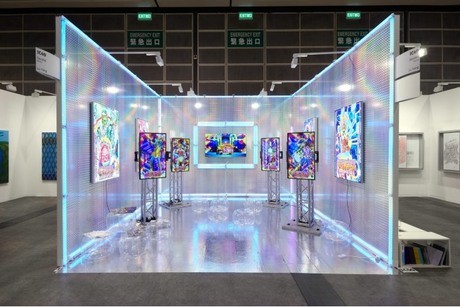The coronavirus pandemic that struck the world could not but affect the contemporary art market: one by one the organizers cancelled all the spring fairs – Miart in Milan, Frieze in New York and finally Art Basel Hong Kong. How can exhibitions survive in this new reality?
For many galleries, this fair in Hong Kong and Basel is the most important fair in terms of sales. The key players of the market gather here: leading galleries, influential collectors, Art Basel is like the New York Stock Exchange for sellers and buyers of art: this is where prices for the main artists are set. The price of a notional Andy Warhol at Art Basel is a reference point, a stock exchange rate that everyone uses to make their decisions.
Over the last couple of years, there is more and more talk in the art world that sales have gone online. When a visitor comes to a fair, if he or she wants to buy something, he or she will find that the best works have already been sold. Galleries don’t take the risk and sell works before the fair by sending out PDFs. And Art Basel in Hong Kong may be the first answer to the question that causes so much controversy: do we really need to see art with our own eyes and fly to the ends of the earth for it, or can all fairs be gradually transferred online?
On the one hand online fairs spare us the risk of an emotional purchase, but on the other hand, don’t we lose important and necessary emotions? Many collectors really do go to explore, watch and buy on impulse, they go for the parties, the champagne, the holiday spirit. They come for the new acquaintances or to maintain existing contacts. To socialize. In addition to the fairs and parties, they go to museums, galleries, visit private collectors and see their collections. All this gives the fairs a special charm.
After months of online viewing room (OVR) teasers, the anticipation for the hybrid 2021 edition of Art Basel Hong Kong turned into palpable excitement as fairgoers slowly trickled into the Hong Kong Convention and Exhibition Centre on Wednesday, a local public holiday, for the first of the fair’s VIP entry slots. This time around, after numerous postponements, the fair’s organizers drastically scaled down the physical fair, which runs until May 23, to just 104 exhibitors, down from 242 in 2019, and the number of visitors at any given time was also much more limited than in years past.
Many in attendance described the opening day, in a word, as “surreal,” including the fair’s global director, Marc Spiegler, who was not in attendance due to international travel restrictions. This edition of Art Basel Hong Kong, which moved from its traditional dates in March, feels surprisingly intimate, as well-rested collectors and gallerists with pent up energy give the fair the air of a belated catch-up session with friends. Instead of taking up two floors of the convention center, the physical fair occupies only one floor, with the extra space going to the satellite fair Art Central and the Christie’s Hong Kong spring auctions.
Leng Lin, a partner and president at Pace Gallery overseeing its Asia operations, said that Art Basel Hong Kong’s timed-entry policy and reduced hall capacity allow for more time for conversations between gallerists and collectors. “Unlike New York, where inland transport within the United States is still possible, Hong Kong is isolated as a city due to quarantine restrictions,” he said. “Although some collectors cannot attend in person, the overall effect is still positive because it creates more opportunities for the local and regional market to grow.”
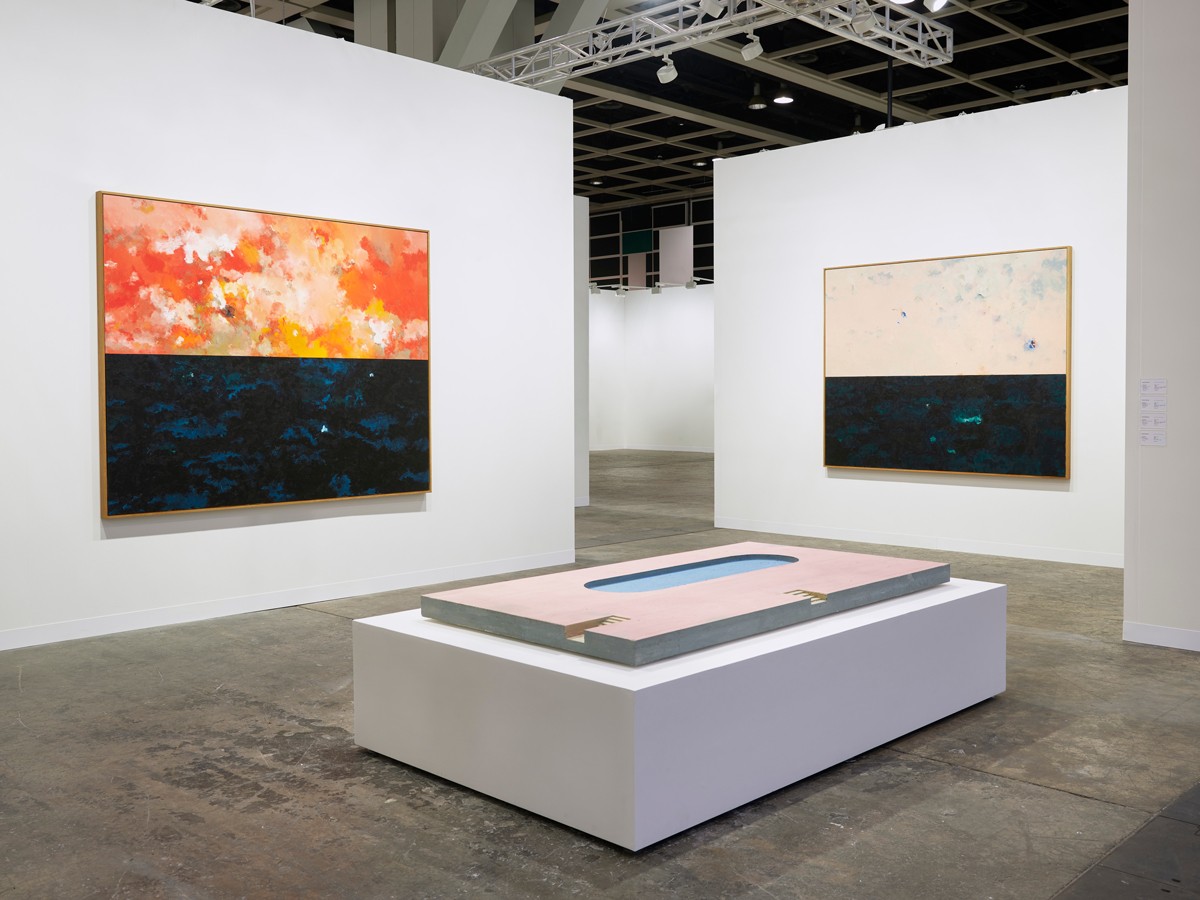
Leo Xu, senior director at David Zwirner, echoed that sentiment: “Now we have the luxury of time for collectors to build relationships with the gallery.” On the first day, the gallery sold over 10 works by multiple artists, including all four works by the Belgian contemporary artist Harold Ancart and a drawing by Chinese artist Liu Ye to important Asian museum collections. “Hong Kong has recovered, proving itself to be a hub of the market in Asia. The market is in good shape and there is no ‘revenge shopping’ behavior, just serious buying.”
Describing the visitors, Xu said that the fair had continued to attract a crowd of open-minded cosmopolitan clients, with an unparalleled appetite for buying modern and contemporary art. Although online viewing rooms have produced strong sales for the gallery since the onset of global lockdowns, providing more access to the fair for collectors abroad, he said that nothing compares to the live experience of being at a fair.
This iteration of Art Basel Hong Kong is complemented by the inaugural “Art Basel Live” digital initiative, which features OVRs, livestreamed events, daily broadcasts, and other virtual experiences. Fiona Römer, a senior director at Hauser & Wirth, said that “Art Basel Live” has also brought new collectors to the gallery’s attention.
“There is an electric atmosphere in Hong Kong as people embrace real life along with the global community tapping into the energy via the OVR,” Hauser & Wirth’s president Iwan Wirth said in an email. “We’ve seen an incredible response to our presentation at Art Basel Hong Kong—90 percent of our first-day sales of works by our artists have been placed in truly superlative collections across the region, which shows that the art market in Asia is on a high.”
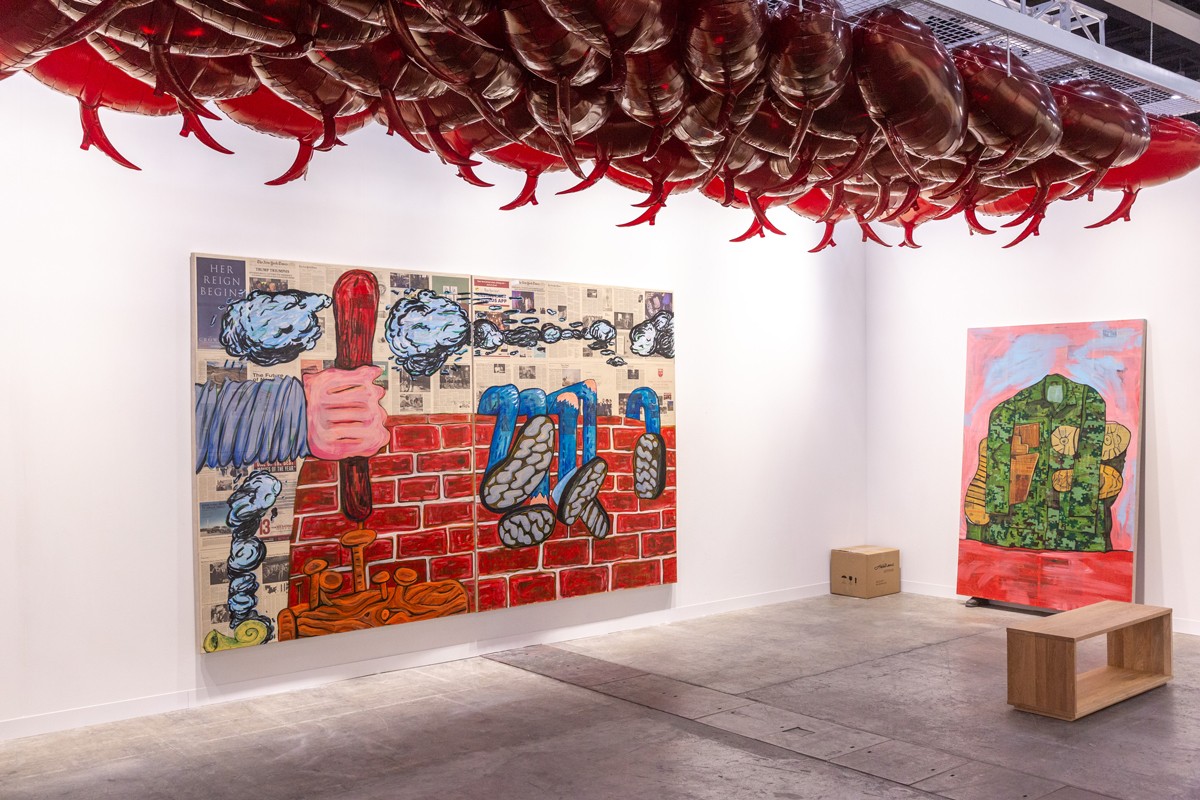
Among the works that Hauser & Wirth sold were George Condo’s painting Blues in A Flat (2021) for $1.75 million, a 2021 mixed-media work by Rashid Johnson for $595,000 to the Long Museum in Shanghai, a Paul McCarthy “White Snow” sculpture from 2016 for $575,000, Gary Simmons’s painting Hangfire (2019) for $175,000, and a 2019 video installation by Pipilotti Rist for $160,000.
Elsewhere at the fair, Gladstone Gallery sold a Keith Haring piece in the range of $1.5 million to $2 million, an Alex Katz painting for $650,000, and 10 paintings by Rirkrit Tiravanija, ranging in price from $25,000 to $200,000. But the biggest sale so far came from Lévy Gorvy, which sold a ca. 1962 Joan Mitchell painting that once belonged to the late collector Barney Ebsworth for $20 million.
Much like representatives from mega-galleries with multiple outposts, Hong Kong–based dealers expressed excitement to be present at the fair. “I feel very lucky to be in this part of the world,” said Galerie Ora-Ora founder Henrietta Tsui-Leung, who is also the cofounder of the Hong Kong Art Gallery Association. “Although 70 percent of my clients are Hong Kong–based, the virtual ‘Art Basel Live’ promotes inclusivity so collectors from the West and in China can be part of this.”
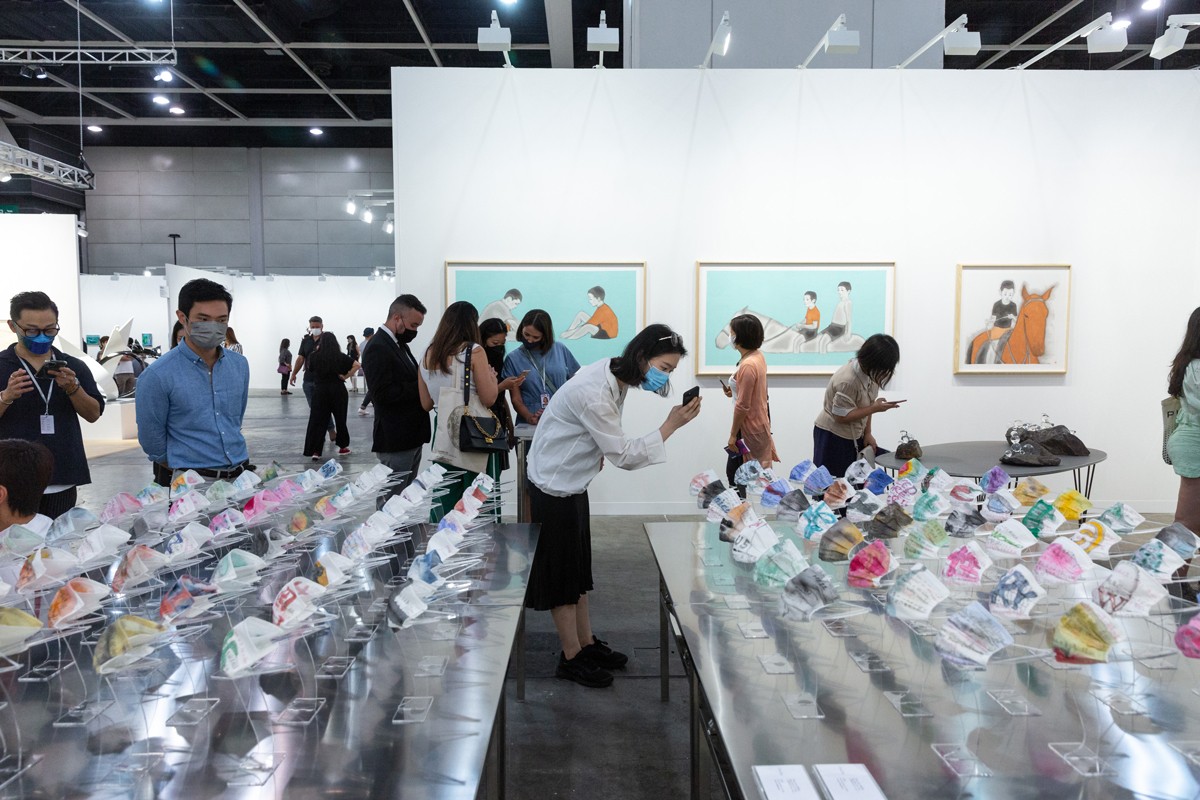
Tsui-Leung said her gallery seized the opportunity to launch NFT works by Chinese contemporary artists Peng Jian and Cindy Ng at this year’s fair, citing it as a pivotal forum for advocating artistic and technological advancements. The gallery accepts cryptocurrency payments for the NFTs.
Travel restrictions and the three-week quarantine policy also meant that some art gallerists did not enter Hong Kong, including a number from mainland China. Capsule Shanghai, for example, asked Hong Kong–based artist Leelee Chan, winner of the 2020 BMW Art Journey prize, to look after its booth by herself in the fair’s Discoveries sector. Similarly, 56 out of the 104 exhibitors, from London’s Stephen Friedman Gallery and Carlos/Ishikawa to New York’s P.P.O.W and 47 Canal, were each staffed by a local stand-in appointed by Art Basel.
In the Capsule Shanghai booth, Chan is on-hand to present her installation “Pallet in Repose (Resurfacer),” which features works embedded with pieces of asphalt from tennis courts in Hong Kong. She said she is glad that she can finally exhibit it where people can see it in-person. “There are so many details in the work,” she said. “The physical engagement of spending more time with art is rewarding; it is not the same as looking at a digital file.”
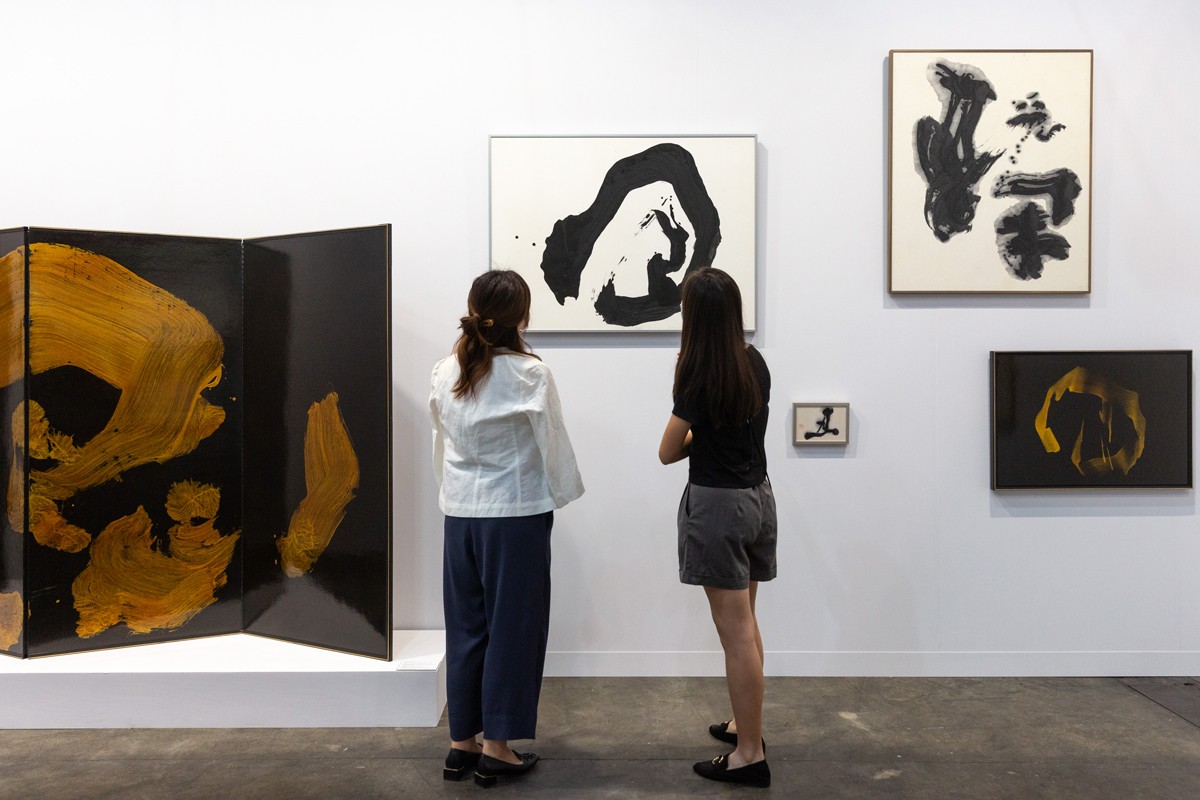
Chan also feels that the local audience visiting the fair is better able to understand her work. “People respond to the cityscape in Hong Kong referenced in my work,” she said. But she is also thinking about potential viewers who won’t be able to visit the fair and has created video documentation of the booth to post to “Art Basel Live,” so that “people outside Hong Kong can experience my work through the hybrid model of the fair.”
Of the hybrid format, Adeline Ooi, Director Asia of Art Basel said during the press conference, “With this particular show and with the hybrid format, we’re seeing galleries experimenting with the medium of online viewing room. What you see in this show is not a mirror image online and it’s interesting to see how galleries amp this up online. I’m interested to see how galleries take this forward.”






